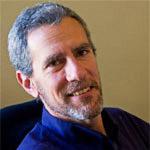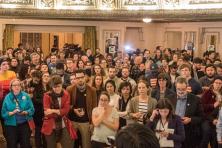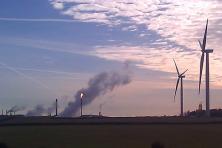This article was originally published at Crosscut.
Business as usual ends, badly and soon.
That’s a lay translation of the predictably depressing part of the Intergovernmental Panel on Climate Change’s (IPCC) recent “synthesis” report, a summary of its fifth full assessment of the state of global climate science since 1990. The report, released yesterday, represents the most comprehensive international scientific enterprise in history, including the review of more than 30,000 studies on climate science, impacts and solutions.
“Climate change is the greatest challenge of our time,” said IPCC co-chairman Thomas F. Stocker. “In short, it threatens our planet, our only home.” The report’s warnings about the consequences of unchecked climate disruption — food shortages, mass dislocations, increased flooding and fires and intensifying weather disasters — are stark, but familiar. The basic physical contours of the crisis had emerged clearly in the previous four assessments.
But the IPCC breaks new ground in this latest report in its conclusions about how we can save ourselves. The chart below shows the difference in projected temperatures between a world (on the left) where we transition to clean energy, and a world (on the right) where we continue with fossil-fuel-dependence-as-usual.

IPCC
This is a choice between two fundamentally different planets. The one on the left would still experience significant climate impacts. The one on the right would be toast. Kevin Anderson, director of the Tyndall Centre for Climate Change, says this scenario “is incompatible with organized global community, is likely to be beyond ‘adaptation’, is devastating to the majority of ecosystems and has a high probability of not being stable (i.e. 4-degrees Centigrade, [7-degrees Fahrenheit] would be an interim temperature on the way to a much higher equilibrium.)”
And let’s be clear, this dystopia is the result of “business as usual.” It’s what we’re doing now, our destination if we stay the course.
By comparing these two scenarios, the IPCC has marked a fateful crossroads for humanity, because the difference between the two is almost entirely a function of which energy path we choose. We can choose Earth – a livable future on a recognizable planet – only if we end the fossil fuel age in this century. The IPCC even endorsed a total carbon budget, a clear limit on the amount of fossil fuels we can safely burn.
This is the conclusion that should pierce through the by-now depressingly familiar drone of chronically unheeded scientific warnings:
We know exactly what to do to stave off the climate crisis. And we know that the cost of doing it, of waging and winning a clean energy revolution in this century, would be negligible. The IPCC estimates that making this transition would reduce annualized global economic growth from 2.4 percent to 2.34 percent. A blip. (And you have to wonder how long that 2.4 percent baseline will last in a world of chronic food shortages, frequent Sandys and increasingly common “tornadoes of fire”? Business as usual? There’s no such thing.)
But just because a clean energy transition is technically and economically feasible doesn’t mean it’s easy. It would mean freeing ourselves from the entrenched economic and political power of the fossil fuel industries. And Big Oil just won’t have that. No matter how many scientists and economists endorse climate action, no matter how urgently humanity needs it, fossil fuel interests fully intend to stifle it.
If the politics of climate action are tough, it’s in no small part because fossil fuel industries have misled Americans about the science, blocked policies that would deliver clean alternatives and purchased a Congress that won’t act. The question is how long we’ll sit still for that? How many grim reports about the consequences of inaction will we have to read, how high will the waters have to rise, before we insist on the solutions we know are possible.





